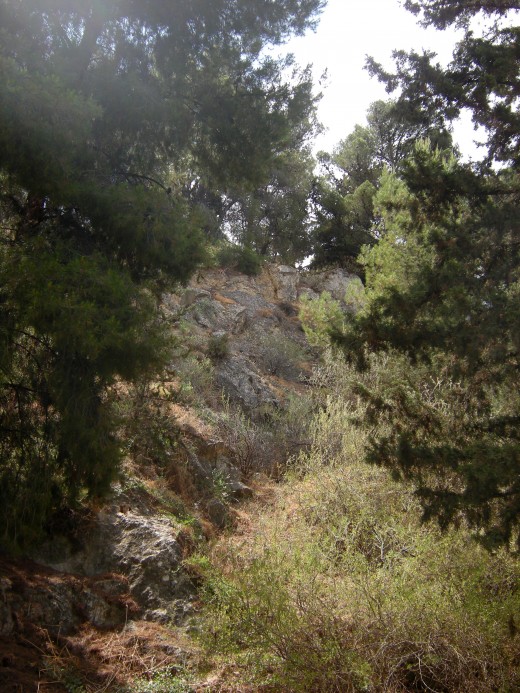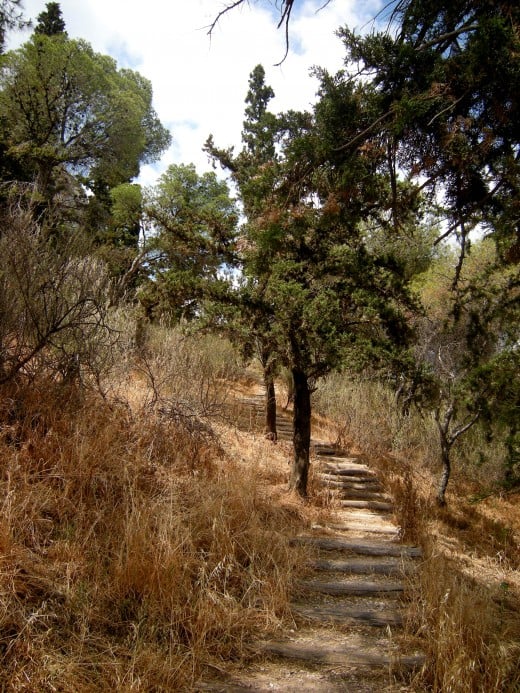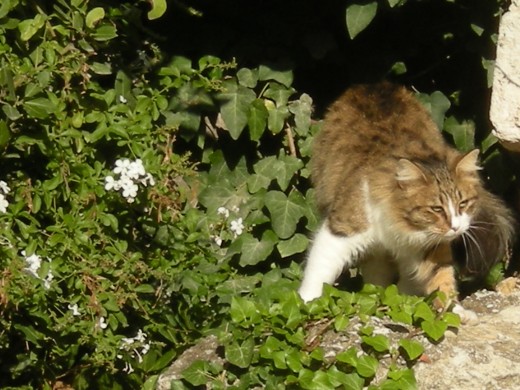Seeing Athens from above: Lycabettus Hill

The Mounts Lycabettus dominates the city's northeast; it's a favorite retreat for Athenians, and a great place from which to get a bird's eye view of the city as it spreads before you all the way to the Saronic Gulf and its islands. Even when the smog is bad, sunsets can be spectacular there and the glittering city beckoning you from below is at its most seductive. Of the nearer hills which stand about the Acropolis, Lycabettus, the highest, raises its steep cone, like a sentinel, high above the Hill of Pallas in the north. In the Lycabettus, the stone, itself a bluish gray, takes that violet and red hues, so famous in poetical descriptions, which shaded with browns and reds, assumes a variety of wondrous tints with the changing effects of light.
To see then the city as a whole the best vantage point is the top, or the flanks, of this Hill; the path winds upwards, bordered by tough cacti of the type called "immortal", their leathery milky green leaves carved with initials. The path is steep, and the walk a good thirthy minute hike to the top; I suggest however, to spend two or three hours before reaching the top of the hill, because there are many paths to discover ( some of the paths to the summit are sloped and are quite slippery), hidden among high pine trees and cipress, where there are many flowers, animals and suggestive views of the valley and the whole city.









Here, there is a myth behind everything and everyplace!
One day the goddess Athena went off to the mountains of Pellene to fetch a rock wherewith to buttress up her Acropolis; in her absence the three sisters, Agraulos, Herse and Pandrosos, overcome by curiosity, opened the secret chest, entrusted to them by the goddess, and they beheld the writhing form of the serpent-like foundling hero Erichtonius. One of Athena's ravens, who had been watching the operation, flew in haste to inform his mistress. He met the goddess near home, bearing a huge mountain in her arms, and told her of what was happening. Athena, in her anger and haste, dropped her burden, which has lain ever since where it fell, and is now known by the name of Lycabettus, the sentinel hill of the Attic plain, ever gazing toward the Acropolis, but destined never to stand shoulder to shoulder with its neighbor as the divine Athena had intended.
Past and present
Lycabettos in Greek means "hill of the wolves"; in fact, now, this hill is the most visited and most renowned in the whole city, but in the past there lived many wolves and it was a place where the noble Athenians went to chase wild animals. All around it there is now the elegant residential area of Kolonaki, with its white and rich villas shaded by the trees of the high hill; it's also home of many embassies, cafes and elegant and exclusive shops. Forgot here the noisy streets of Athens, its traffic and the crowds of turists: Kolonaki and the Lycabettus hill are two places full of silence, flowers, small roads where curious or shy cats stare at you from the windows or from the green foliage of the trees, where both an Athenian or a turist can walk pleasantly as if in an elegant but rural village...





As you look southward towards the sea from the top of Lycabettus you can see a large white marble structure against a background of dark green pine trees on the Ardettos hill: this is the Panathenaic Stadium, forever associated with the revival of the Olympic Games. It faces the southeast corner of the Zappeion gardens and the bpttom of Herod Atticus street and the Presidential Palace. Then, a few hundred meters to the west lie the white columns of the temple of the Olympian Zeus; here in claasical times, and until the last century, flowed the Ilissos river. Generations of schoolboys knew of it because of the renowned passage in Plato's dialogue 'Phaedrus': this was the celebrated valley of the Ilissos river, full of gardens and vegetation. Thus, our image of the Ilissos, formed by Plato and by the ancient writers, is a romantic one, of an idyllic brook surrounded with greenery, where Socrates and his friends rested on the turf under the plane trees by the stream, listening to the buzzing song of the cicadas, cooled by the sea breeze, and started to talk philosophy...the romance cannot now be recaptured because the Ilissos is no more, covered over with the concrete os the modern city and can no longer be seen; however, stare at the beauty, still present despite the modern age, of this valley, still covered by vegetation and flowers and a romantic atmosphere that overhangs upon it....
From the top of the hill, looking southwest, the eye is drawn out across the sea to the island of Aegina, a very beautiful place, with its pyramidal mountain, some twelve miles out from the port of Piraeus; sweeping the horizon from the left, or south east, to the right, or northwest, you see the whale back hump of Mount Hymettus stretching out toward the sea, and then again an agglomeration of housing stretching down to Phaleron and Piraeus, a withish and gleaming mass with flashes of green from which the eye gradually picks out individual features and buildings. In the centre the Acropolis and the Plaka at its foot; on the right again Mount Aigaleo, and the Island of Salamis just before it; and further to right, finally, the marvelous Mount Parnes.
The bones and the knuckles of the ancient city poke up through the modern residential cityscape, from there you can see how the modern city has grown around the ancient core; from this height however the movement and noise of the streets are remote and muffled: it's easy, on this hill, to believe to be back in time...


















